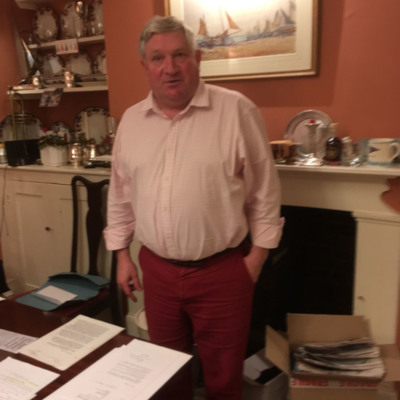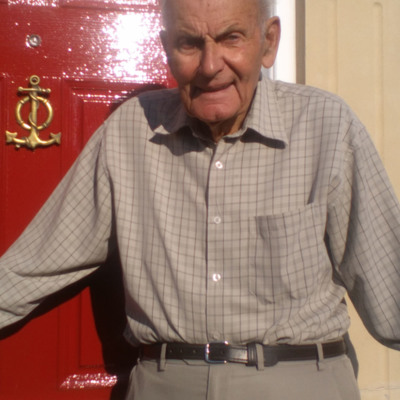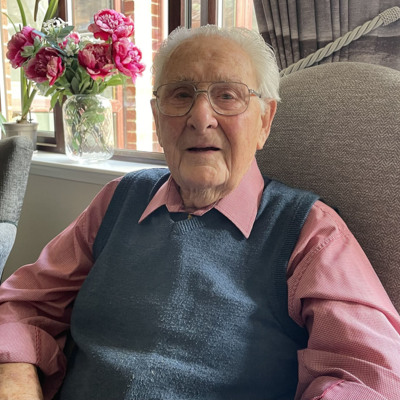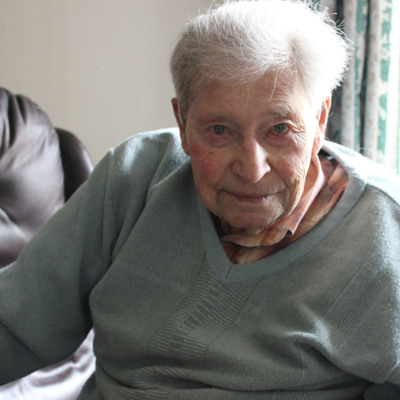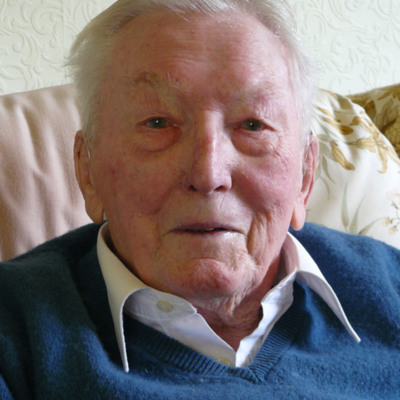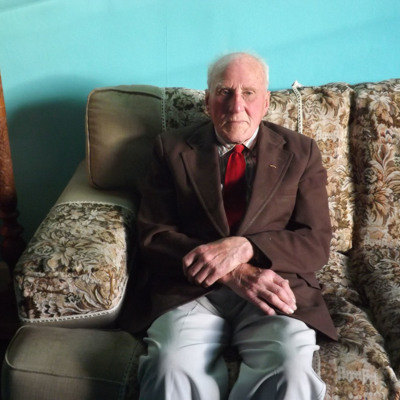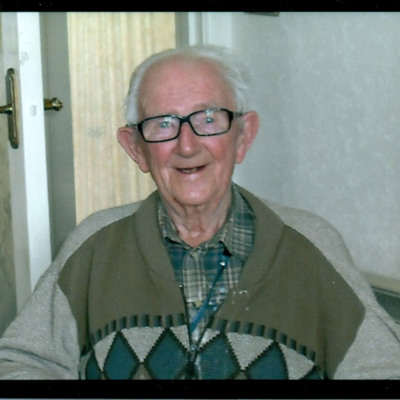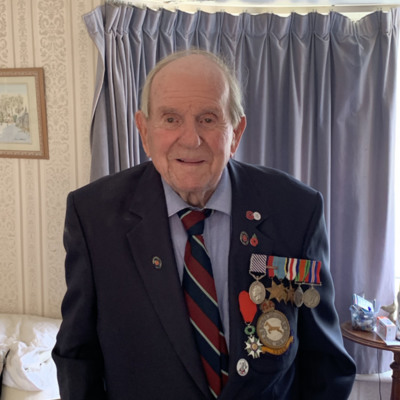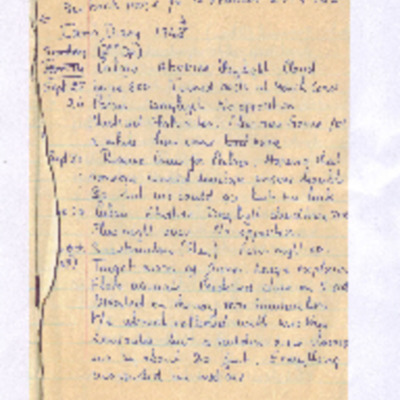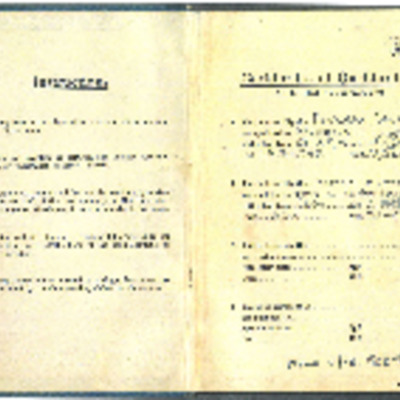Browse Items (356 total)
- Spatial Coverage is exactly "Germany--Duisburg"
Interview with Seymour Owen Scott
Tags: 170 Squadron; aircrew; bombing; bombing of Dresden (13 - 15 February 1945); Catalina; Distinguished Flying Cross; fear; Halifax; Harris, Arthur Travers (1892-1984); lack of moral fibre; Lancaster; Lancaster Finishing School; Master Bomber; military service conditions; pilot; RAF Hemswell; searchlight; training
Interview with Ron Hemsworth
Tags: 76 Squadron; air gunner; aircrew; bale out; bombing; C-47; crewing up; Dulag Luft; escaping; fear; Halifax; military service conditions; mine laying; prisoner of war; RAF Bridlington; RAF Cosford; RAF Honeybourne; RAF Linton on Ouse; RAF Morpeth; RAF Swinderby; shot down; Stalag Luft 6; superstition; Whitley
Interview with Richard Hollis
Tags: 11 OTU; 1660 HCU; 29 OTU; 5 BFTS; 50 Squadron; anti-aircraft fire; bale out; bombing; British Flying Training School Program; civil defence; crewing up; Distinguished Flying Cross; Halifax; Heavy Conversion Unit; Home Guard; Lancaster; Manchester; mid-air collision; Operational Training Unit; RAF Little Rissington; RAF North Luffenham; RAF Skellingthorpe; RAF Swinderby; RAF Westcott; searchlight; training; Wellington
Interview with Reginald Tween
Interview with Ray Parke. Two
Interview with Ray Parke. One
Tags: 218 Squadron; African heritage; aircrew; bombing; bombing of Dresden (13 - 15 February 1945); displaced person; flight engineer; Gee; Lancaster; military service conditions; Operational Training Unit; P-51; perception of bombing war; RAF Chedburgh; RAF Methwold; RAF Silverstone; RAF St Athan; Stirling; training; Wellington
Interview with Lacey Peter Webb
Interview with Ken Thomas
Tags: 16 OTU; 3 Group; 622 Squadron; Air Transport Auxiliary; aircrew; Asian heritage; bombing; Distinguished Flying Cross; Heavy Conversion Unit; Lancaster; Lancaster Finishing School; navigator; Operational Training Unit; pilot; RAF Desford; RAF Heaton Park; RAF Mildenhall; RAF Stradishall; RAF Woodbridge; RCAF Moncton; Tiger Moth; training; Wellington
Interview with John Philip Lambourn
He was classed as working in a reserved occupation, but joined the Air Training…
Tags: 514 Squadron; aircrew; anti-aircraft fire; bombing; crewing up; demobilisation; fear; flight engineer; Gee; Lancaster; Lancaster Finishing School; military ethos; Navy, Army and Air Force Institute; RAF Chedburgh; RAF Feltwell; RAF Kirton in Lindsey; RAF Padgate; RAF St Athan; RAF Waterbeach; recruitment; Scarecrow; service vehicle; Stirling; target indicator; training
Interview with John Henry Thomas
Tags: 102 Squadron; aircrew; anti-aircraft fire; bombing; bombing of Dresden (13 - 15 February 1945); crash; Fw 190; ground personnel; Halifax; Halifax Mk 3; Heavy Conversion Unit; Mosquito; P-47; P-51; padre; pilot; RAF Acaster Malbis; RAF Moreton in the Marsh; RAF Pocklington; RAF Riccall; searchlight; Tiger Moth; training; V-2; V-3; V-weapon; Wellington
Interview with James Thomas Bateman
Interview with James Sampson
Interview with Jack Pragnell
Interview with Jack Kenneth Lyon
Interview with Henry Wolfe Wagner. One
Interview with Geoffrey Robinson
Tags: 626 Squadron; aircrew; bombing of Dresden (13 - 15 February 1945); bombing of Helgoland (18 April 1945); crewing up; flight engineer; Halifax; Lancaster; military ethos; Operation Exodus (1945); Operation Manna (29 Apr – 8 May 1945); perception of bombing war; RAF Hemswell; RAF Lindholme; RAF Wickenby; searchlight; Tiger force
Interview with Frank Dell
Interview with Eddie Edmunds
Tags: 106 Squadron; 608 Squadron; air gunner; aircrew; bale out; bombing; Cook’s tour; Distinguished Flying Cross; flight engineer; forced landing; Gibson, Guy Penrose (1918-1944); Lancaster; Manchester; mid-air collision; Mosquito; navigator; Oxford; pilot; RAF Downham Market; RAF Syerston; training; Wellington
Interview with Cyril Peters
Tags: 4 BFTS; 77 Squadron; Advanced Flying Unit; aircrew; British Flying Training School Program; Distinguished Flying Cross; Flying Training School; Halifax; Halifax Mk 2; Halifax Mk 3; Halifax Mk 5; Harvard; Initial Training Wing; military service conditions; Oxford; pilot; RAF Ansty; RAF Elvington; RAF Full Sutton; RAF Manston; RAF Marston Moor; Tiger Moth; training; Whitley
Interview with Colin Deverell
Tags: 51 Squadron; aircrew; anti-aircraft fire; bombing; Bombing of Peenemünde (17/18 August 1943); Distinguished Flying Medal; flight engineer; H2S; Lancaster; Me 110; Mosquito; Operation Manna (29 Apr – 8 May 1945); perception of bombing war; promotion; RAF Tuddenham; RAF Wratting Common; recruitment; Resistance; searchlight; Stirling; V-1; V-2; V-weapon
Interview with Bob Smith
Tags: 15 Squadron; Advanced Flying Unit; Air Observers School; aircrew; Anson; anti-aircraft fire; bombing; crewing up; debriefing; demobilisation; Gee; Lancaster; Lancaster Finishing School; mine laying; navigator; Normandy campaign (6 June – 21 August 1944); observer; RAF Chedburgh; RAF Feltwell; RAF Mildenhall; RAF West Freugh; recruitment; searchlight; Special Operations Executive; Stirling; training; Wellington; Window
Interview with an Anonymous Interviewee (An00086)
Tags: 222 Squadron; 419 Squadron; aircrew; bombing; coping mechanism; crash; evacuation; faith; flight engineer; ground crew; ground personnel; Halifax; Halifax Mk 3; Lancaster; memorial; military service conditions; Operational Training Unit; RAF Hornchurch; RAF Middleton St George; RAF St Athan; searchlight; Spitfire; training
Incendiary hail swamps the target
Tags: bombing; incendiary device; Lancaster
Ian Henderson's diary 1944
Tags: anti-aircraft fire; bombing; Halifax; Lancaster; Master Bomber; Me 110; P-47; P-51; searchlight; shot down; V-1; V-2; V-weapon
Ian Grant Henderson’s navigator’s flying log book
Tags: 153 Squadron; 166 Squadron; 1662 HCU; 83 OTU; Advanced Flying Unit; Air Observers School; aircrew; Anson; bombing; bombing of Dresden (13 - 15 February 1945); C-47; Halifax; Heavy Conversion Unit; Lancaster; mine laying; navigator; Operational Training Unit; RAF Bishops Court; RAF Blyton; RAF Kirmington; RAF Peplow; training; Wellington


